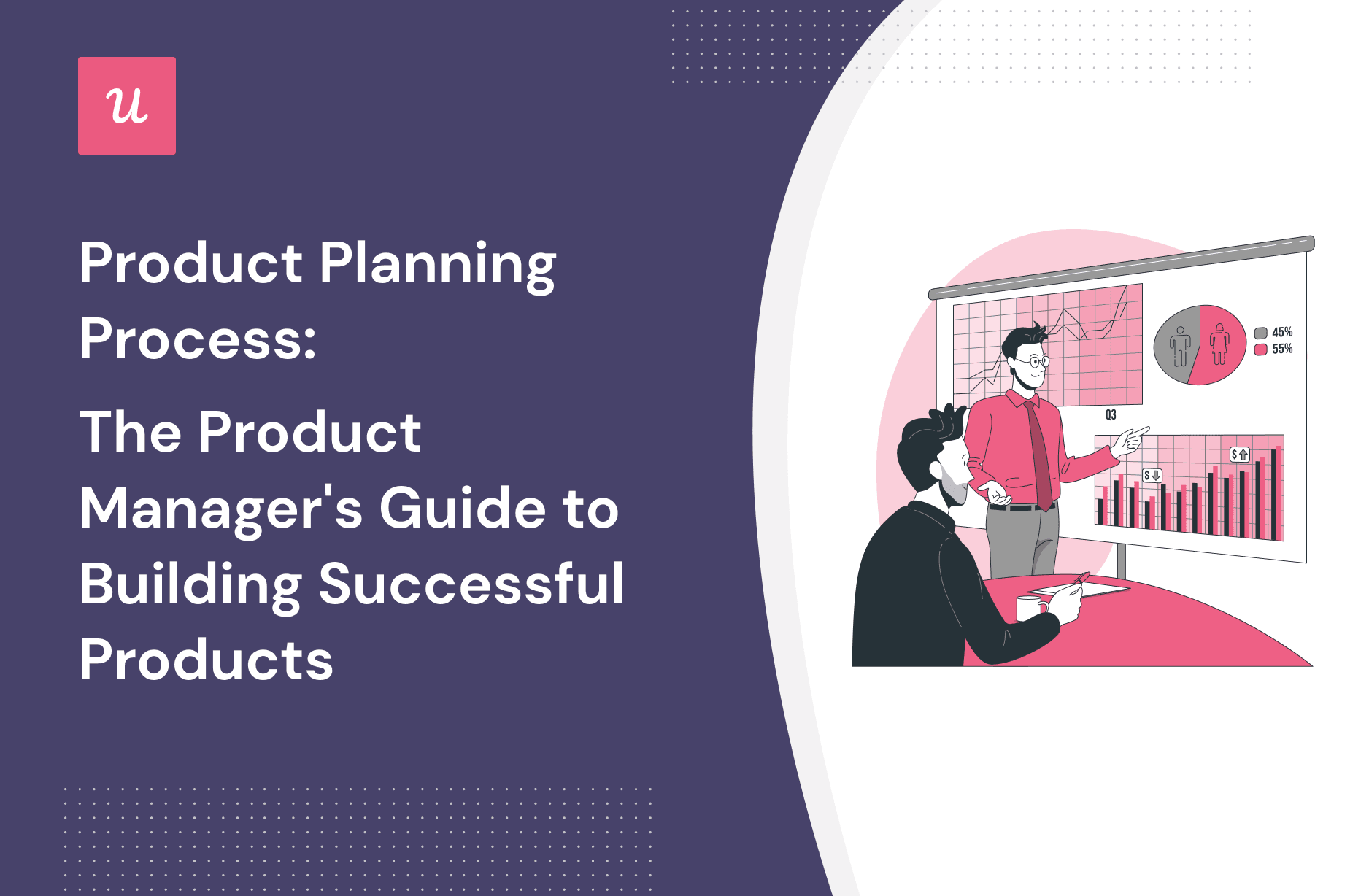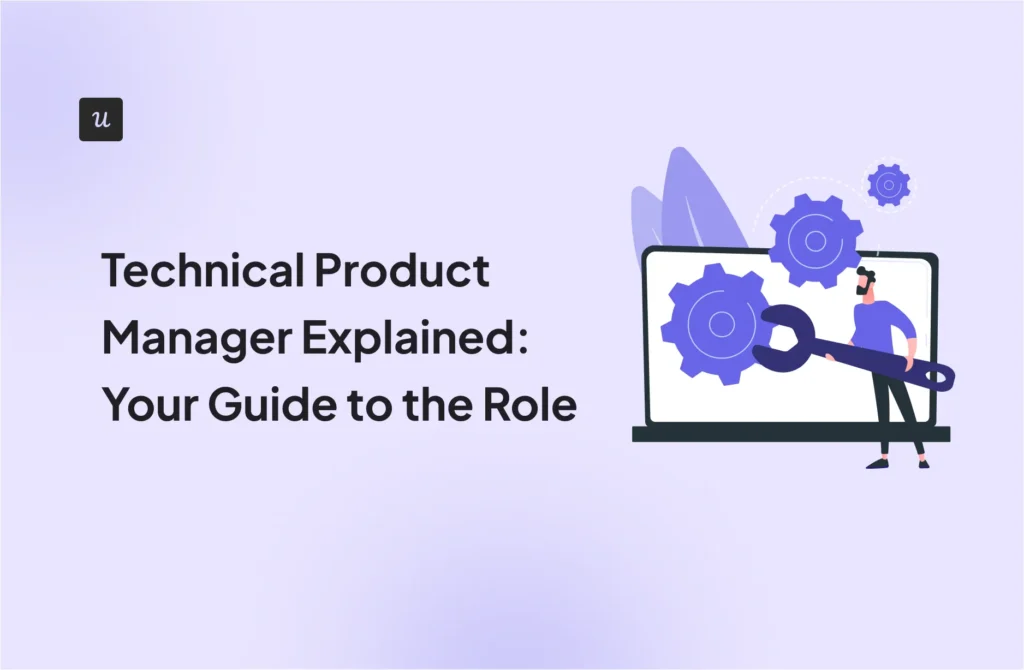
Product Planning Process: The Product Managers’ Guide to Building Successful Products
What’s product planning? Why is it important? How do you apply your product management skills and knowledge to build a robust product plan? What tools do you have at your disposal?
The answers to the questions may seem daunting but rest assured as we’ve got you covered!
Are you ready? Let’s jump in!
Try Userpilot Now
See Why 1,000+ Teams Choose Userpilot

What is product planning?
In short, product planning is an ongoing process that lays foundations for every stage of the product development cycle. In other words, it involves all the steps and decisions that you need to make to build a successful product.
Its focus is on defining the key outcomes your product should deliver through customer and target market research. It also entails feature discovery and UX development to deliver these outcomes.
While working on the product plan, product managers must identify the best metrics and tools to track the effectiveness of the process as well.
What is NOT product planning
Product planning is often mistaken for project planning, product strategy development, or product discovery. While there are some common themes between them, all the processes have different objectives and focus.
For starters, project planning focuses on the delivery of outputs, like features, while product planning focuses on the outcomes. That’s the change we want to see in user behavior as a result of using the product and the value for the business.
Product planning involves user needs analysis or generating solutions that would satisfy their needs, so this is where it overlaps with product discovery.
What about product strategy? It is connected with outcomes like product planning but these are higher-level goals. Product strategy is also more focused on positioning and product-market fit.
Product plan vs go-to-market (GTM) plan
The key difference between product plans and the go-to-market (GTM) plan is that the former is internally orientated while the latter – is externally.
While a product plan focuses on building the product and achieving its target outcomes, the GTM strategy focuses on how to promote and sell the product.
Why is product planning important?
Product planning is a key factor that ensures product teams know where they’re going and how they’re going to get there.
Helps build products that answer user’s needs
Focusing on the customer and business outcomes helps product teams work on products that satisfy real user needs.
It also helps teams avoid recency bias and stops them from falling into the build or feature parity traps.
They develop functionality that solves specific user problems instead of releasing features for their own sake, to match what competitors offer or because that is what users want.
Aligns your team behind the product vision
Developing a successful product requires cross-organizational cooperation. Product planning aligns them with the product vision.
It ensures that all teams head in the same direction and work towards the same goals. It also helps to keep all the senior stakeholders informed and helps product managers justify their decisions.

Gives you a clear picture and helps prioritize the development timeline
By constantly monitoring how the product is performing against the desired outcomes, product teams are able to make better prioritization decisions.
Thanks to ongoing product usage tracking or user feedback, they are able to respond to user needs and fix issues more quickly. In the long run, it helps avoid technical debt.
The stages of a successful product planning process
For product planning to be successful, it needs to cover all the stages of the product development process.
Determine what problem you are trying to solve
No matter if you’re developing a new product or just a new feature, you always start by analyzing customer needs to identify possible problems to solve for your customers.
Mind you, however, that the term problem is not limited to user pain points but also covers user needs and desires. That’s why Teresa Torres prefers to call them opportunities.
Speaking of Theresa Torres, this stage is not a one-off exercise. The product team should be engaged in continuous product discovery to uncover new problems to solve. This is true for new products as well as established ones that are looking to add value.

The bigger the problem, the more potential there is for your product to drive customer and business value.
Perform a competitive analysis
Even if the problem you set your sights on is considerable, it may turn out that the market is saturated. This is going to limit your options when it comes to marketing and monetizing your solution.
When your competitive analysis reveals that this is the case, you will need to look for ways to differentiate your product from your rivals.
Move on to customer research
Next, you need to engage in a bit of customer development. This is necessary to verify how significant your problem is for your users, and if they’re ready to pay for your solution.
Qualitative and quantitative research tools, like prototype testing, fake door testing, focus groups, or user interviews will help you to test assumptions and validate your product idea before you spend any money on it.

Product development process time: product roadmap creation
If your experiments show that the product is worth developing, it’s time to develop a roadmap that will guide the work of your team.
Even though the task normally belongs to the product manager or the product owner, the whole team should be involved in its development.
Because its goal is to plan what functionality to develop in what order, it requires good prioritization skills. You will also need to use the right tools to make sure that the roadmap is clear to read.

How detailed the roadmap is will depend on how far ahead you’re planning.
You may be able to estimate very accurately what you’re going to build over the next couple of months or so. However, including a detailed plan beyond that may be impossible and in fact, counterproductive.
Start with the Minimum Viable Product (MVP)
Releasing your minimum viable product (MVP) is next. Your MVP should consist of the absolute minimum set of features that allow users to complete their jobs.
If you’ve done your customer discovery and validated ideas properly, there’s a big chance your MVP is already going to be a strong product. However, you should not aspire to release a complete offering.
For starters, it’s not possible to develop a complete product in isolation from customers. You need real user data and feedback for that, and the only way to get the right amount of input is by releasing the product to the public.
Beta launch or full-scale product launch?
However, your product release doesn’t need to be a full-scale product launch with all the bells and whistles like complex release announcements or detailed release notes.
For example, during your product and customer discovery, you may have been able to find potential customers who would be ready to take your product for a spin. If so, you could start with a beta launch.
Launching your product on Product Hunt is another way to release the product to a smaller audience to start with. That’s where you can attract the attention of innovators and early adopters who will be happy to test your product and maybe even recommend it to their mates.
If the latter happens, it’s a big win for a product as word-of-mouth marketing is by far the most effective way of acquiring customers.
Test product market fit and iterate
The fact that your users were initially happy to spend money on your product doesn’t mean it will stay like this.
To check how good your product is at satisfying user and market needs, run regular product-market fit tests.
By asking how disappointed users would be if they couldn’t use the product, you can assess their satisfaction and how much value they derive from it.

Follow up the test with qualitative surveys or user interviews to find further opportunities to improve your product. And keep iterating.
Work on your minimum viable experience
The fact that your MVP is good enough for your users to complete their jobs doesn’t mean that it will be enough to retain them for longer or recruit more cautious categories of adopters.
That’s because users pay attention not only to the functionality but also to the overall experience. That’s why keep working to remove friction from the sales process, develop solid onboarding flows, improve product usability and develop adequate customer support.
Only then you can say that you’re offering the Minimum Viable Experience (MVE).
Drive growth with incremental innovation across the product life cycle
Even if your MVP is solid and you’re delivering more than the minimum viable experience, there are still tons of opportunities to add value to the product.
What’s more, new competitors appear on the market and it doesn’t take long for them to copy your features. To avoid product parity, you must keep innovating.
Such incremental innovation helps you quickly identify new opportunities, prioritize those that will have the biggest impact, and implement them. Only once the feature delivers the optimum value, you move to the next one.

What’s important, incremental innovation should continue throughout the product development cycle.
Don’t fall in love with your product: Sunsetting is part of the product planning process
Sad and disappointing as it may seem at first, you sometimes need to sunset features or even the product itself.
If the product is not selling anymore and you have no ways to change it or you’re developing another product that is going to satisfy the needs of your users better, it’s time to kill it.
While teams that have invested lots of their time or energy into their development may be heartbroken, it’s in fact an opportunity to divert precious resources to where they matter the most.
Tools for different stages in the product planning process
What are some of the best product management tools that you can use for product planning?
Product managers are spoilt for choice here but it doesn’t mean it’s easy to find the right software that would fit the needs of your team and wouldn’t bloat your tool stack.
Miro – for collaboration and research
Miro is a whiteboard tool that allows dispersed teams to collaborate in real life on their projects.
At what stage of the product planning process is it useful? All of them.
Thanks to its flexibility and the constantly growing number of templates available in Miroverse, you can use it to create pretty much any kind of visual document.
Need to record your brainstorming or ideation sessions? Check! Conduct SWOT analysis? Check! Draw an opportunity solution tree? Check! Create a roadmap? Check! Build a Kanban board for backlog management? Yes, it’s a check too!

Userpilot – for driving product adoption
Userpilot is a product adoption platform that comes in handy later on in the product life cycle.
Starting to use it right after your MVP launch will allow you to discover new opportunities and boost your product adoption.
How exactly?
Well, there’s a very big chance that your MVP is not going to have the greatest usability to start with. However, you can remove some of the friction by using UI patterns like tooltips or driven actions to help users complete their jobs.

How will you know where the friction is?
You can do it by tracking user interactions with your product. And by interactions, we don’t mean just clicks but also text inputs and hovers.

Even when your product UI is more refined, Userpilot can improve activation and adoption with personalized onboarding experiences like interactive product walkthroughs or checklists.
Of course, you can track and analyze user engagement with these as well.
And now you can onboard and engage mobile app users by creating personalized messaging, push notifications, and surveys with Userpilot.
Conclusion
Product planning creates a solid foundation for your product’s development, so don’t neglect the process. And now that you know what it involves and what tools you can use, there’s no reason why you should.
If you want to see how Userpilot can aid agile product planning, book the demo!






